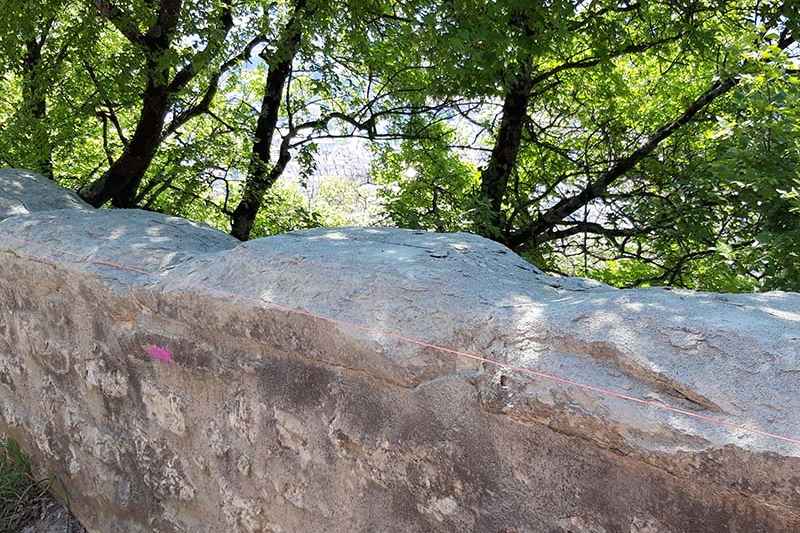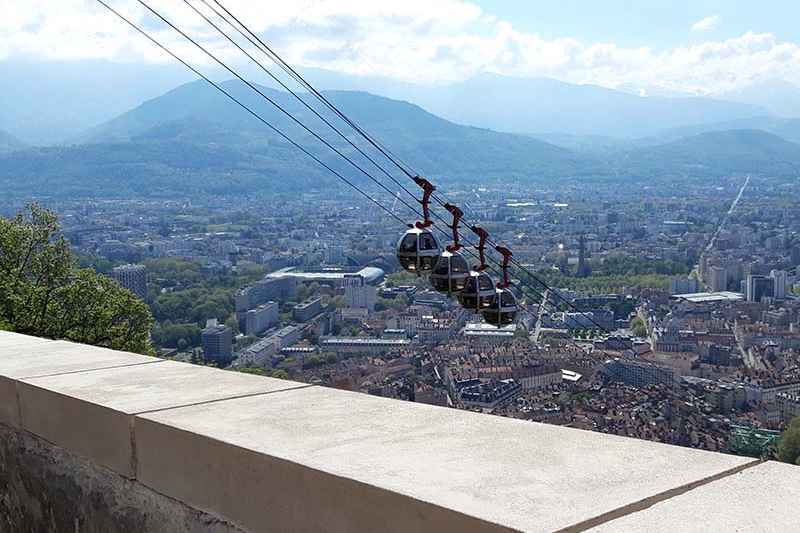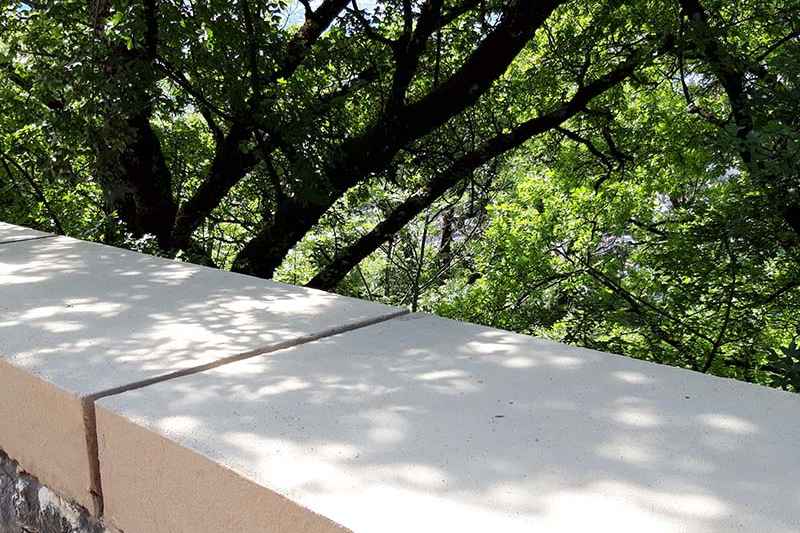Restoration & decoration
Restoration of the retaining wall of the Bastille in Grenoble
Overview
Damage to a retaining Wall

A BIT OF HISTORY
Grenoble’s Bastille, perched on Mount Rachais, is an iconic symbol of the city and a witness to its military and urban history.
The current fortification was built between 1823 and 1848 on the foundations of medieval walls, to protect Grenoble and control the Isère valley after the Napoleonic wars.
Its strategic role extended beyond defense: it also served as a lookout and control point overseeing access routes to the city. Over time, the Bastille became an emblematic site, offering panoramic views over Grenoble, the Chartreuse mountains, and the Vercors.
Through the centuries, the fortification suffered from weathering, water infiltration, and ground movement. Some sections, notably the retaining wall along the access path, weakened and required regular maintenance to ensure visitor safety and preserve the site’s historical integrity.
Today, the Bastille stands as a key historical and tourist landmark of Grenoble. Its preservation is vital to maintain the link between the city and its past, while offering residents and visitors a unique place for walking and sightseeing.
PROJECT
Facing the deterioration of the retaining wall, Grenoble Metropole launched a consolidation project aimed to:
Stop water infiltration and protect the structure.
Reinforce weakened masonry.
Secure the site for visitors and ensure long-term access to the Bastille summit.
The goal was to combine heritage preservation and user safety, using durable materials adapted to the constraints of a steep urban environment.
RESTORATION
Repair Steps

Implementation
The project began with a detailed diagnosis and protection of the most fragile areas. As in the 19th century, PROMPT natural cement was selected as an alternative to stone.
Infiltrations were sealed, weakened masonry reinforced with appropriate mortars.
Finally, joints were redone and surfaces cleaned to restore the original aesthetic appearance.
A Durable Solution
PROMPT natural cement fully meets the requirements of historical restoration projects thanks to its many qualities. Its light ochre color allows a wide range of shades and develops a beautiful natural patina over time. Its compatibility with existing materials, local production, and long-term performance make it ideal for restoring the Bastille retaining wall. PROMPT natural cement is a durable, aesthetic, and heritage-respecting solution produced just a few kilometers from Grenoble.
Completed Project
The Bastille Retaining Wall Regains Its Strength

Complete Restoration
Visitors to Grenoble’s Bastille can now enjoy a safe access path and a consolidated retaining wall that preserves the site’s historical integrity. This wall, a witness to nearly two centuries of military and urban history, has regained its full solidity while respecting original materials and techniques.
The restoration, carried out with compatible mortars and PROMPT natural cement, stopped infiltration and strengthened weakened masonry. The Bastille, a symbol of Grenoble, now offers a breathtaking panorama over the city, the Isère valley, and surrounding mountains—a site where history, heritage, and nature meet.
KEY INFORMATION
3 months of work for the full restoration.
Cast in place.
Produced in La Pérelle (38).
Contracting authority
Ville de Grenoble
Project Management
Pierrick de Vaujanny
Company
EURL Pierre Jean Combier
Discover
Discover all our products
Discover our product
Derived from a unique deposit located in the Chartreuse massif, PROMPT natural cement is an exclusive product of the Vicat Group.
Documentation
Find all our brochures, site sheets, application sheets and video tutorials.


